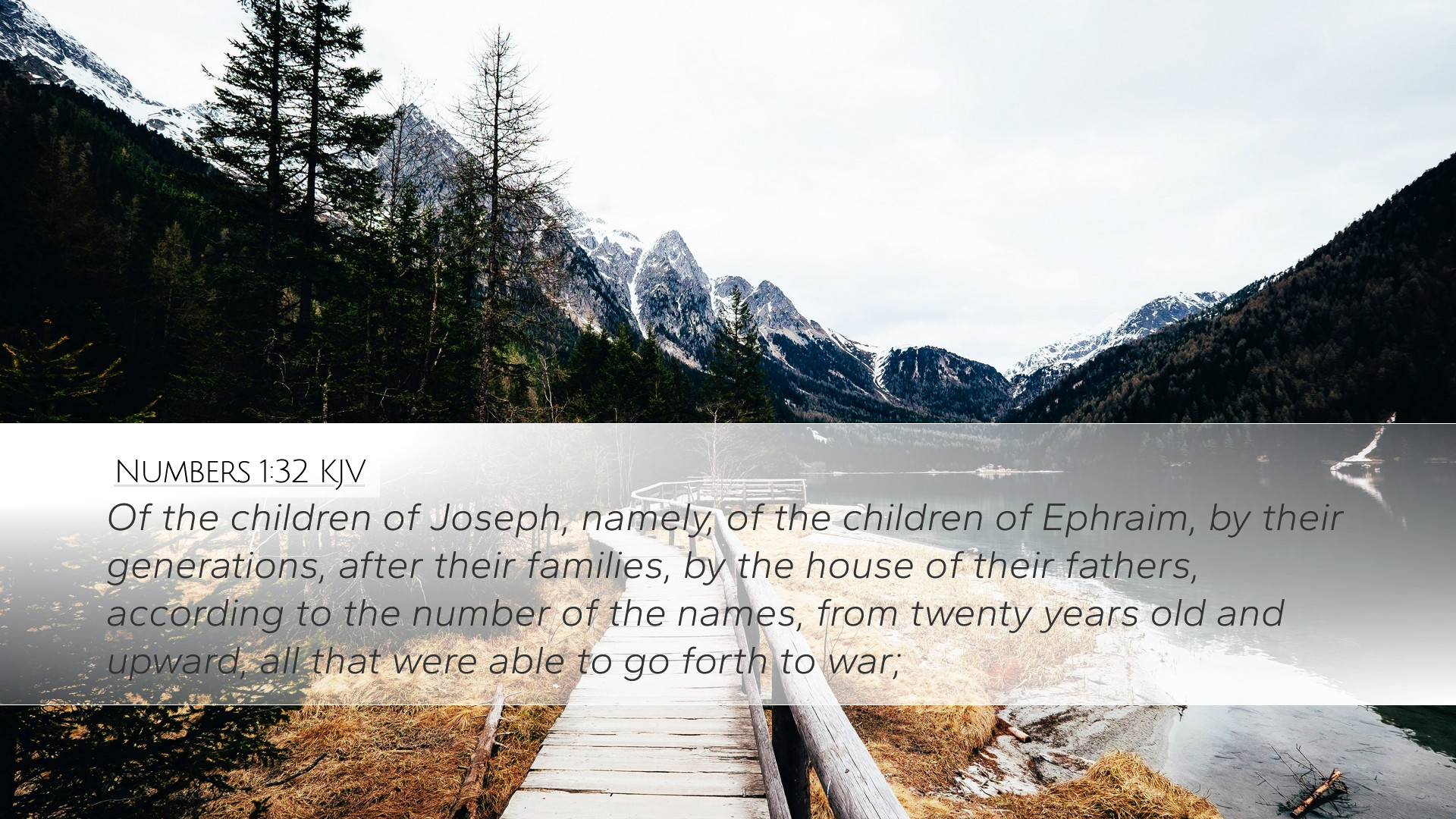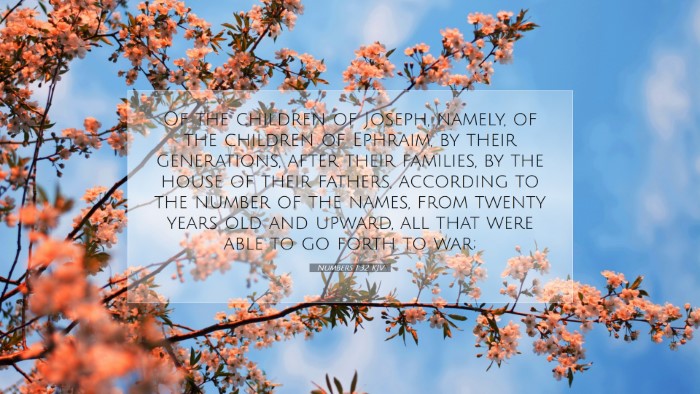Commentary on Numbers 1:32
In Numbers 1:32, we find a rich passage that contributes significantly to the understanding of Israel’s organization and structure during their wilderness journey. The verse reads: "Of the children of Joseph, namely, of the children of Ephraim, by their generations, after their families, by the house of their fathers, according to the number of the names, from twenty years old and upward, all that were able to go forth to war." This verse serves as a record of the generational lineage and military preparedness of the tribe of Ephraim, one of the two tribes descended from Joseph.
Overview of the Context
The Book of Numbers takes its name from the two censuses of the Israelites mentioned within it. This particular verse appears during the first census described in the book, which God commanded Moses to take of all males twenty years old and upward, demonstrating preparation for the impending challenges as the Israelites mobilized toward the Promised Land.
Insights from Matthew Henry
Matthew Henry emphasizes the significance of Ephraim within the tribes of Israel. He notes that Ephraim symbolizes not only strength but also the blessings that come from the lineage of Joseph, who was favored and elevated in Egypt. Henry elaborates on the importance of knowing the tribes' numbers and their organization: "The tribes were formed into companies which were important for military expeditions and social order." The counted individuals were significant not only for their ability to fight in battle but also as representatives of God's promises to Israel regarding their multiplication and settlement in Canaan.
Contributions from Albert Barnes
Albert Barnes provides additional details on the historical context. He remarks that Ephraim's inclusion in the census highlights their strategic importance. Barnes notes that Ephraim, being the dominant tribe of the northern kingdom, played a crucial role in subsequent events in biblical history, such as in the conquests and divisions within the land. He states: "This census was a preparation, not merely for war, but for the establishment of God's covenant with His people, showcasing Ephraim's role in fulfilling that covenant."
Reflections from Adam Clarke
Adam Clarke dives into the genealogical aspects of this verse. He outlines the implications of the phrase “by their generations” and explains that it connects the present generation of warriors to the ancestral legacy of Joseph. Clarke observes: "The term indicates a continuation of faith, a lineage that had seen the promises of God and was now to witness their fulfillment in battle." This highlights the theme of divine faithfulness through generations and serves as a reminder to contemporary believers of their heritage in faith.
Theological Implications
The implications of this verse extend beyond mere historical record-keeping. For pastors, students, theologians, and scholars, the enumeration signifies the importance of recognizing the contributions of each tribe in the fulfillment of God's promises. Each person counted was not just a number, but a vital component in the greater narrative of redemption and God's covenant with His people.
- Preparation for Ministry: Understanding the call to serve and participate in God's work as individuals.
- Legacy of Faith: Emphasizing the continuity of faith passed down through generations.
- Divine Order and Organization: Recognizing that God calls His people to be organized and prepared.
Conclusion
In conclusion, Numbers 1:32 not only records the demographic data vital for military readiness but also serves as a profound reminder of God's faithfulness across generations. The insights gleaned from Matthew Henry, Albert Barnes, and Adam Clarke illustrate the layered meanings within the text, encouraging modern readers to appreciate the historical context while applying the theological significance to their personal lives and ministries. As we reflect on this verse, we must consider how we, like the tribes of Israel, are being called to stand ready to fulfill God's purpose in our current age.


